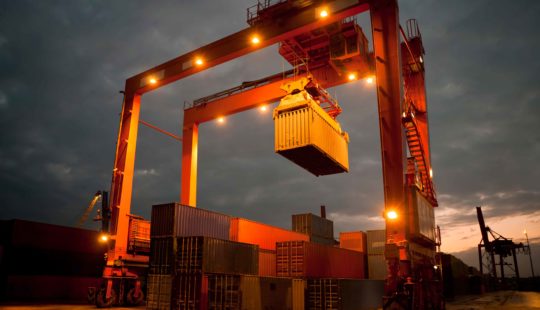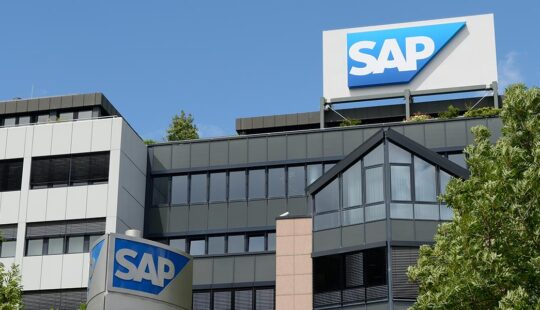The pandemic has had a huge – and visible – impact on supply chains. From images of panicked shoppers and empty shelves to the well-documented shortages of personal protective equipment (PPE), we’ve seen supply chain disruption become headline news.
The reality is, modern supply chains are complex. Globalization has enabled a wider range of products to be available to consumers, faster than ever before, and at a lower cost. Managing the global supply of goods has been reliant on shippers and distribution experts using technologies that provide network visibility, transparency, and reliability. These complex global supply chain networks were running smoothly, until COVID-19 changed everything.
I recently hosted a webinar on this topic, featuring an SAP colleague along with speakers from our partners at project44 and Uber Freight. The SAP perspective was provided by Till Dengel, Vice President of Solution Management – Logistics. He was joined by project44’s Vice President Value Engineering, Christian Pillar, and Uber Freight’s Head of Sales, Andrew Smith.
I asked each of them about:
- The immediate impact they saw in the industry as the pandemic took hold early in the year
- The recovery efforts currently underway
- What changes they predict for more resilient supply chains in the future.
Responding in the moment
We began by addressing the immediate disruptions to supply chains caused by COVID-19. These focused on five interconnected areas:
- Panic buying – Many shoppers overbought key supplies in the early phases of the pandemic. Christian Piller shared project44 research that found “an increase in flow to grocery and discount stores of almost 60% in one week in March as many retailers scrambled to replenish shelves quickly”.
- Facility closures – There was an increase of congestion at cross-docking and distribution centers as many were forced to close. This gave trucks fewer locations to unload, causing further congestion and delays to shipments.
- Staff shortages – Warehouses and transportation both saw widespread staff shortages due to border closures and employees needing to self-isolate. The need for new staff to fill the gaps caused by the shortages increased at a faster rate than many teams were able to grow.
- Route changes – With whole regions closing, shippers were forced to establish new routes and transportation lanes. Many businesses shifted from well-established commercial flight supply routes to shipments by sea, causing dramatically different shipping times and a loss of visibility.
- Lack of transparency – The pace and volume of change across borders, routes, and transportation lanes meant that many businesses lost the visibility they needed to manage supply and demand. Many turned to the flexibility of platforms like Uber Freight, which “experienced a huge spike in application programming interface (API) activity as shippers made more calls for information across distribution networks”.
Recovering from the shock
While lockdowns are easing in many places worldwide, things are by no means ‘returning to normal’. Closures and restrictions still differ along country and state lines and the risk of a second wave of infections remains. Till Dengel highlighted that “in Europe, many businesses are widening their network of suppliers to increase resiliency against future disruption caused by border closures”.
Technologies that can deliver real-time insight will be the key moving forward. Shippers need to understand their networks and act quickly based on changing or unexpected conditions. Andrew Smith spoke to the work Uber Freight is doing with its customers to “build logic and rule-based systems that can take action based on increased levels of visibility”.
By directly integrating technologies like Uber Freight, SAP, and project44, shippers can create a Logistics Business Network that enables them to make fast and accurate routing and scheduling decisions.
Reimagining the future
Christian Piller of project44 predicted that “supply chains will develop into more agile networks. In fact, this may become imperative for survival as 83% of consumers expect fast delivery despite an economic downturn”, according to post-COVID research by project44.
Discussing the pressures faced by shippers, Piller said: “On top of the expectation of speed, shippers are quickly altering the modes they depend on to meet the needs of a digital world while striving to gain a more comprehensive view into the suppliers of their suppliers to mitigate future disruptions.”
SAP’s Till Dengel stressed the three caveats of success in uncertain times:
- Visibility to understand supply chain networks
- Trust in the reliability of the information
- The right processes in place to act with agility
In addition to the perspectives shared in the webinar, I also spoke to Paige Cox, Senior Vice President of Digital Supply Chain Networks at SAP, about the need for organizations to develop digital business networks to achieve greater visibility, efficiencies and agility.
She said: “Using SAP Logistics Business Network together with our partners Uber Freight and project44, supply chain managers can identify, collaborate with, and improve visibility of freight carriers and inventory to transform logistics from isolated transactional insights into an orchestration of intelligent logistics.”
How can organizations begin this transformation?
A fully integrated digital business network that brings together best-of-breed technologies is a critical first step to weathering the next wave of disruption, whatever form it may take.
For more insight on developing resilient, future-proof supply chains, I encourage you to watch the webinar featuring SAP, Uber Freight, and project44.
This article was originally featured on SAP BrandVoice, Forbes.



